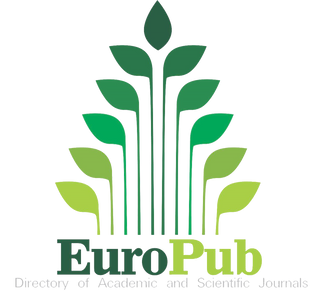TOTAL PHENOLICS, ANTIOXIDANT AND ANTIMICROBIAL ACTIVITIES OF DALMATIAN LABURNUM (PETTERIA RAMENTACEA (SIEBER) C. PRESL) METHANOL EXTRACTS
DOI:
https://doi.org/10.54652/rsf.2018.v48.i1.55Keywords:
antibacterial, antifungal, Balkan endemic, Fabaceae, phenolic compoundsAbstract
UDK 581.19:547.56]:582.736.3
The aim of this study was to determine the total concentrations of some phenolic compounds and antioxidant and antimicrobial activity of methanol extracts of different parts of Illyrian endemic Petteria ramentacea. Concentrations of phenolic compounds were determined with UV/VIS spectrophotometry. The antioxidant activity of plant extracts was determined by 2,2-diphenyl-1-picrylhydrazyl (DPPH) radical scavenging activity. Antimicrobial activity of extracts was evaluated by measuring the inhibition's zone against six selected test bacteria and two fungi. The highest average total phenols concentrations were in seeds (10.78 mg GAE g-1 DW), root (10.51 mg GAE g-1 DW) and bark (10.40 mg GAE g-1 DW), and the lowest in inflorescences (2.99 mg GAE g-1 DW) and leaves (3.12 mg GAE g g-1 DW). The total flavonoids concentrations were determined only in leaves (8.25 mg CE g-1 DW) and in stem (5.66 mg CE g-1 DW). Both flavanols and proanthocyanidins (0.75 mg CE g-1 DW and 3.49 mg CE g-1 DW, respectively) were found only in leaves. Analysis of variance indicated presence of significant differences between total phenols and flavanols concentrations (p<0.05), and Duncan's test confirmed the presence of intraspecies variability according to their concentrations. The highest antioxidant activity (IC50) was observed for the seed's extract (6.86%) and the lowest for the bark’s (51.31%). All methanol extracts showed the most pronounced antibacterial activity against Staphylococcus epidermididis, and the lowest against S. aureus subsp. aureus. Antifungal activity against Candida albicans was moderate. Since Peteria ramentacea methanol extracts are potential natural antioxidant and antimicrobial preparations against selected microorganisms, it is necessary to continue with more detailed analysis.
References
ABOU-ZAID M, SCOTT IM. (2012): Pyrolysis bio-oils from temperate forests: fuels, phytochemicals and bioproducts. In: Bergeron C, Carrier DJ, Ramaswamy S. (eds), Biorefinery Co-products. Phytochemicals, primary metabolites and value-added biomass processing, Wiley, Noida, India, pp. 323.
AIT-KACIAOURAHOUN K., FAZOUANE F, BENAYACHE S. (2015): Pharmacological potential of Cytisus triflorus l’Hérit. Extracts as antioxidant and anti-inflammatory agent. Der Pharmacia Lettre 7(5): 104-110.
AO C, LI A, ELZAAWELY A.A, XUAN D.T, TWATA S. (2008): Evaluation of antioxidant and antibacterial activities of Ficus microcarpa L. fill extract. Food Control 19: 940-948.
AOKI T, AKASHI T, AYABE SI. (2000): Flavonoids of leguminous plants: Structure, biological activity, and biosynthesis. Journal of Plant Research 113: 475-488.
BAUER AW, KIRBY WMM, SHERRIS JC, TURCK M. (1966): Antibiotic susceptibility testing by a standardized single disk method. American Journal of Clinical Pathology 36: 493-496.
BOUCHOUKA E, DJILANI A, BEKKOUCHE A. (2012): Antibacterial and antioxidant activities of three endemic plants from Algerian Sahara. Acta Scientiarum Polonorum. Technologia Alimentaria11(1): 61-65.
BROEKAERT WF, CAMMUE BPA, DE BOLLE MFC, THEVISSEN K, DE SAMBLANX GW,OSBORN RW. (1997): Antimicrobial peptides from plants. Critical Reviews in Plant Sciences 16: 297-323.
CROZIER A, JAGANATH IB, CLIFFORD MN. (2006): Phenols, polyphenols and tannins: An overview. In: Crozier A, Clifford MN, Ashihara H. (eds), Plant Secondary Metabolites: Occurrence, Structure and Role in the Human Diet, Blackwell Publishing Ltd, Oxford, UK.
ERDEMOGLU N, OZKAN S, DURAN A, TOSUN F. (2009): GC-MS analysis and antimicrobial activity of alkaloid extract from Genista vuralii. Pharmaceutical Biology 47(1): 81-85.
ERDEMOGLU N, OZKAN S, TOSUN F. (2006): Alkaloid profile and antimicrobial activity of Lupinus angustifolius L. alkaloid extract. Phytochemistry Review, DOI 10.1007/s11101-006-9055-8.
FAO (2006): Guidelines for soil description, Food and Agriculture Organization of the United Nations, Rome, Italy.
FERNANDES I, NAVE F, GONÇALVES R, DE FREITAS V, MATEUS N. (2012): On the bioavailability of flavanols and anthocyanins: Flavanol–anthocyanin dimers. Food Chemistry 135: 812-818.
FUKAREK P. (1949): O granicama prirodnog areala tilovine (Petteria ramentacea (Sieber) Presl.). Godišnjak biološkog instituta u Sarajevu II(1-2): 53-59.
FZAP (2013): Pedological map, Federal Institute of Agropedology of Federation of Bosnia and Herzegovina, www.agropedologija.gov.ba.
GADZOVSKA S, MAURY S, DELAUNAY A, SPASENOSKI M, JOSEPH C, HAGÈGE D. (2007): Jasmonic acid elicitation of Hypericum perforatum L. cell suspensions and effects on the production of phenylpropanoids and naphtodianthrones. Plant Cell Tiss Organ Culture 89: 1-13.
GUETTAF S, ABIDLI N, KARICHE S, BELLEBCIR L, BOURICHE H. (2016): Phytochemical screening and antioxidant activity of aqueous extract of Genista saharae (Coss. & Dur.) Der Pharmacia Lettre 8(1): 50-60.
GUPTA VK, FATIMA A, FARIDI U, NEGI AS, SHANKER K, KUMAR JK, RAHUJA N, LUQMAN S, SISODIA BS, SAIKIA D, DAROKAR MP, KHANUJA SPS. (2008): Antimicrobial potential of Glycyrrhiza glabra roots. Journal of Ethnopharmacology 116: 377-380.
GWEE J., CASE C. (2014): Antimicrobial properties of a traditional medicinal plant, Lupinus variicolor. SACNAS National Conference 16-18.10. Los Angeles, USA.
HABIBATNI S, MICELI N, GINESTRA G, MAAMERI Z, BISIGNANO C, CACCIOLA F, UTCZAS M, MONDELLO L, ANWAR S, BENAYACHE S, ZAMA D, BENAYACHE F, TAVIANO MF. (2016): Antioxidant and antibacterial activity of extract and phases from stems of Spartium junceum L. growing in Algeria. International Journal of phytomedicine 8(1): 37-46.
HAMED AOA, AYOUB SMH. (2015): Chemical composition and antimicrobial activity of Sudanese Lupinus termis L. root extracts. The Pharma Innovation Journal 4(5): 01-04.
HANGANU D, OLAH N, BENEDEC D, MOCAN A, CRISAN G, VLASE L, POPICA I, ONIGA I. (2016):Comparative polyphenolic content and antioxidant activities of Genista tinctoria L. and Genistella sagittalis (L.) Gams (Fabaceae). Pakistan Journal of Pharmaceutical Sciences 29(1, Suppl): 301-307.
HERAVI MM, RODI S, ARDALAN P. (2013): Study of antioxidant and free radical scavenging activities of Cotoneaster medicus and Glycyrrhiza glabra plants. Journal of Chemical Health Risks 3(2): 27-34, 2013.
HUANG D, OU B, PRIOR RL. (2005): The chemistry behind antioxidant capacity assays. Journal of Agriculture and Food Chemistry 53: 1841-1856.
ISO 10390. (2005): www.iso.org/standard/40879.html.
ISO 10693. (1994): www.iso.org/standard/18781.html.
IUSS WORKING GROUP WRB. (2007): World Reference Base for Soil Resources 2006. First Update 2007. in: Bundesanstalt für Geowissenschaften und Rohstoffe (Ed.), Hannover, pp. 128.
KÄHKÖNEN MP, HOPIA AI, VUORELA HJ, RAUHA J, PIHLAJA K, KUJALA TS, HEINONEN M. (1999): Antioxidant activity of plant extracts containing phenolic compounds. Journal of Agricultural and Food Chemistry 47: 3954-3962.
KAUR S, MONDAL P. (2014): Study of total phenolic and flavonoid content, antioxidant activity and antimicrobial properties of medicinal plants. Journal of Microbiology & Experimentation 1(1): 00005, DOI: 10.15406/jmen.2014.01.00005.
KÜÇÜKBOYACI N, ÖZKAN S, TOSUN F. (2012): Gas chromatographic determination of quinolizidine alkaloids in Genista sandrasica and their antimicrobial activity. Records of Natural Products 6: 171-174.
KUŠTRAK D, KUJUNDŽİĆ N. (1974): Tilovina-ukras imotskog kamenjara. Priroda LXIII (3): 65-68.
LAMPART-SZCZAPA E, SIGER A, TROJANOWSKA K, NOGALA-KALUCKA M, MALECKA M, PACHOLEK B. (2003): Chemical composition and antibacterial activities of lupin seeds extracts. Die Nahrung 47(5): 286-290.
LIMA-FILHO JV, CORDEIRO RA. (2014): In vitro and in vivo antibacterial and antifungal screening of natural plant products: prospective standardization of basic methods. iN: Albuquerque UP. et al. (eds.), Methods and Techniques in Ethnobiology and Ethnoecology, Springer Protocols Handbooks, DOI 10.1007/978-1-4614-8636-7_17.
LOGRADA T, CHAKER AN, CHALCHAT JC, RAMDANI M, SILINI H, FIGUEREDO G, CHALARDE P. (2010): Chemical composition and antimicrobial activity of essential oils of Genista ulicina and G. vepres. Natural Product Communications 5(5): 835-838.
LOGRADA T, RAMDANI M, FIGUEREDO G, CHALCHAT J.C, CHALARD P. (2012): Essential oil composition and antimicrobial activity of Genista microcephala Coss. et Dur. International Journal of Medicinal and Aromatic Plants 2(1): 75-79.
LUIS A, DOMINGUES F, GIL C, DUARTE AP. (2009): Antioxidant activity of extracts of Portuguese shrubs: Pterospartum tridentatum, Cytisus scoparius and Erica spp.. Journal of Medicinal Plants Research 3(11): 886-893.
MADRID AM, ESPINOZA LJ, MELLADO MA, OSORIO ME, MONTENEGRO IJ, JARA CE. (2012): Evaluation of the antioxidant capacity of Psoralea glandulosa L. (Fabaceae) extracts. Journal of the Chilean Chemical Society 57(3): 1328-1332.
MEDA A, LAMIEN CE, ROMITO M, MILLOGO J, NACOULMA OG. (2005): Determination of the total phenolic, flavonoid and proline contents in Burkina Fasan Honey, as well as their radical scavenging activity. Food Chemistry 91(3): 571-577.
MORRIS J, KHETTRY A, SEITZ EW. (1979): Antimicrobial activity of aroma chemicals and essential oils. Journal of the American Oil Chemists' Society 56: 595-603.
MORRISEY JP, OSBOURN A. (1999): Fungal resistance to plant antibiotics as a mechanism of pathogenesis. Microbiology and Molecular Biology Reviews 63: 708-724.
MUNSELL COLOR. (1994): Munsell Soil Color Charts. New Windsor.
NADAŽDIN M, ĆURIĆ R. (1966): Rasprostranjenje, ekologija i ekonomski značaj zanovijeti (Tilovine) Petteria ramentacea u Hercegovini. Šumarski list 5-6: 286-292.
NAGHILOO S, MOVAFEGHI A, DELAZAR A, NAZEMIYEH H, ASNAASHARI S, DADPOUR MR. (2012): Ontogenetic variation of total phenolics and antioxidant activity in roots, leaves and flowers of Astragalus compactus Lam. (Fabaceae). Bioimpacts 2(2): 105-109.
OHADOMA SC, NNATUANYA I, AMAZU LU, OKOLO CE. (2014): Antimicrobial activity of the leaf extract and fractions of Lupinus arboreus. Journal of Medicinal Plant Research 8(8): 386-391.
OOMAH BD, TIGER N, OLSON M, BALASUBRAMANIAN P. (2006): Phenolics and antioxidative activities in narrow-leafed lupins (Lupinus angustifolius L.). Plant Foods for Human Nutrition 61(2): 91-97.
ORDOÑEZ A, GOMEZ J, VATTUONE M, ISLA M. (2006): Antioxidant activities of Sechium edule (Jacq.) Swart extracts. Food Chemistry 97: 452-458.
OREOPOULOU V. (2003): Extraction of natural antioxidants. In: Tzia C, Liadakis G. (eds), Extraction optimization in food engineering, Marcel Dekker Inc., New York, pp. 329-346.
ORHAN IE, TOSUN F, TAMER U, DURAN A, ALAN B, KÖK AF. (2010): Quantification of genistein and daidzein in two endemic Genista species and their antioxidant activity. Journal of the Serbian Chemical Society 76(1): 35-42.
PEREIRA OR, SILVA AM, DOMINGUES MR, CARDOSO SM. (2012): Identification of phenolic constituents of Cytisus multiflorus. Food Chemistry 131(2): 652-659.
ROBARDS K, PRENZLER PD, TUCKER G, SWATSITANG P, GLOVER W. (1999): Phenolic compounds and their role in oxidative processes in fruits. Food Chemistry 66: 401-436.
SANCHEZ-MORENO C, LARRAURI JA, SAURA-CALIXTO F. (1999): Free radical scavenging capacity and inhibition of lipid oxidation of wines, grape juices and related polyphenolic constituents. Food Research International 32: 407-412.
SINGELTON VR, ORTHIFER R, LAMUELA-RAVENTOS RM. (1999): Analysis of total phenols and other oxidation substrates and antioxidants by means of Folin–Ciocalteu reagent. Methods in Enzymology 299: 152-178.
SPIRIDON I, COLCERU S, ANGHEL N, TEACA CA, BODIRLAU R, ARMATU A. (2011): Antioxidant capacity and total phenolic contents od oregano (Origanum vulgare), lavender (Lavandula angustifolia) and lemon balm (Melissa officinalis) from Romania. Natural Product Research 25(17): 1657-1661.
STEFANOVIC O, COMIC LJ. (2011): Inhibitory effect of Cytisus nigricans L. and Cytisus capitatus Scop. on growth of bacteria. African Journal of Microbiology Research 5(27): 4725-4730.
STEFANOVIĆ O, RADOJEVIĆ I, VASIĆ S, ČOMIĆ LJ. (2012): Antibacterial activity of naturally occurring compounds from selected plants. In: Bobbarala V. (ed), Antimicrobial Agents. InTech, ISBN 978-953-51-0723-1, DOI: 10.5772/1867: 1-24.
SULTANA S, HAQUE A, HAMID K, URMI KF, ROY S. (2010): Antimicrobial, cytotoxic and antioxidant activity of methanolic extract of Glycyrrhiza glabra. Agriculture and Biology Journal of North America 1(5): 957-960.
TALA VRS, DA SILVA VC, RODRIGUES CM, NKENGFACK AE, DOS SANTOS LC, VILEGAS W. (2013): Characterization of proanthocyanidins from Parkia biglobosa (Jacq.) G. Don. (Fabaceae) by flow injection analysis-electrospray ionization ion trap tandem mass spectrometry and liquid chromatography/electrospray ionization mass spectrometry. Molecules 18: 2803-2820.
TOUBAL O, DJAHOUDI A, BOUZABATA A. (2011): Preliminary studies and antimicrobial evaluation of the aerial parts of Genista numidica ssp. numidica. Journal of Life Sciences 5(11): 954.
VEEN G, GÜNTHER S, GREINWALD R, BACHMANN P, WITTE L, KUŠTRAK D, CZYGAN F. (1992): Quinolizidine alkaloids in Petteria ramentacea. Phytochemistry 31(10): 3487-3490.
VERMERRIS W, NICHOLSON R. (2008): Phenolic compound biochemistry. Springer Science+Business Media B.V.
VILLA-RUANO N, PACHECO-HERNÁNDEZ Y, RUBIO-ROSAS E, RUIZ-GONZÁLEZ N, CRUZ-DURAN R, LOZOYA-GLORIA E, ZURITA-VÁSQUEZ G, FRANCO-MONSREAL J. (2012): Alkaloid profile, antibacterial and allelopathic activities of Lupinus jaimehintoniana B.L. Turner (Fabaceae). Archives of Biological Science Belgrade 64(3): 1065-1.
WALKLEY A, BLACK IA. (1934): An examination of Degtjareff method for determining soil organic matter, and proposed modification of the chromic acid tritation method. Soil Sci. 37: 29-38.
WANG S, CLEMENTS J. (2008): Antioxidant activites of lupin seed. Proceedings 12th International Lupin conference, Fremantle, Western Australia, 14-18.09: 546-551.
WEBSTER D, TASCHEREAU P, BELLAND RJ, SAND C, RENNIE RP. (2008): Antifungal activity of medicinal plant extracts. Preliminary screening studies. Journal of Ethnopharmacology 115: 140-146.
WETTSTEIN D, JENDE-STRID B, AHRENST-LARSEN B, SORENSESN JA. (1977): Biochemical mutant in barley renders chemical stabilization of beer superfluous. Carlsberg Research Communications 42(5): 341-351.
WINK M, WITTE L. (1985): Quinolizidine alkaloids in Petteria ramentacea and the infesting aphids, Aphiscytisorum. Phytochemistry 24(11): 2567-2568.
WINK M. (1984): Chemical defense of Leguminosae. Are quinolizidine alkaloids part of the antimicrobial defense system of Lupins? Zeitschrift für Naturforschung 39c: 548-552.
WINK M. (2013): Evolution of secondary metabolites in legumes (Fabaceae). South African Journal of Botany, 89: 164-175.
WOLFE K, WU X, LIU HR. (2003): Antioxidant activity of apple peels. Journal of Agricultural and Food Chemistry 51: 609-614.
WOYDIŁO A, OSZMIAŃSKI J, CZEMERYS R. (2007): Antioxidant activity and phenolic compounds in 32 selected herbs. Food Chemistry 105: 940-949.
YANG L, WEN K-S, RUAN X, ZHAO Y-X, WEI F, WANG Q. (2018): Response of plant secondary metabolites to environmental factors. Molecules 23: 762; doi:10.3390/molecules23040762www.mdpi.com/journal/molecules.
ZHAO MT. (2014): Caracterisations chimiques et biologiques d'extraits de plantes aromatiques et medicinales oubliees ou sousutilisees de Midi-Pyrenees (France) et Chongqing (Chine). Doctorat de L'université de Toulouse, Institut National Polytechnique de Toulouse, pp. 37-39.
ZHENG W, WANG SY. (2001): Antioxidant activity and phenolic compounds in selected herbs. Journal of Agricultural and Food Chemistry 49(11): 5165-70.



















